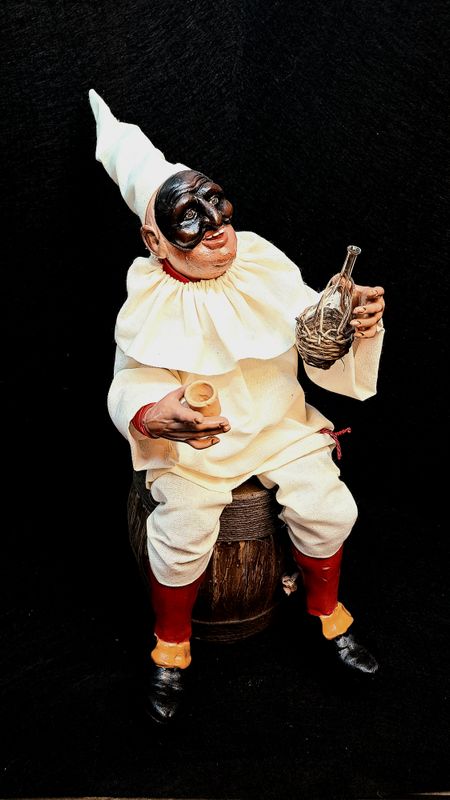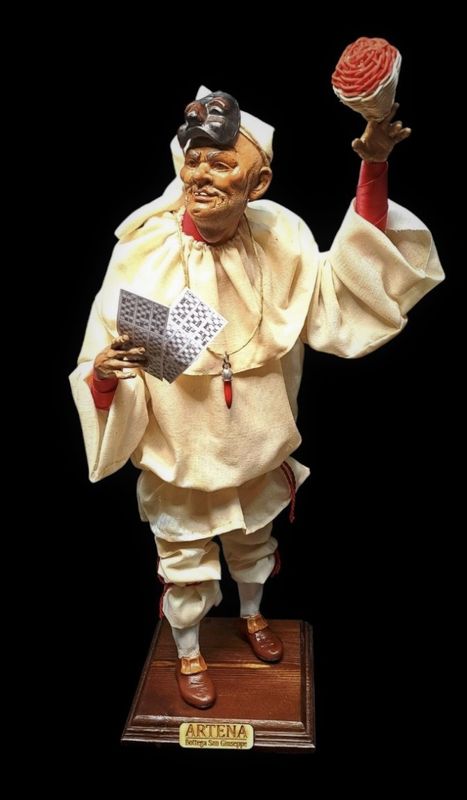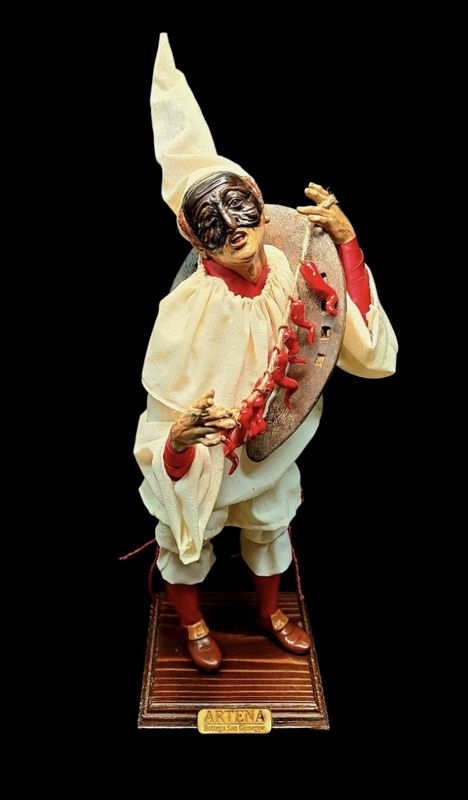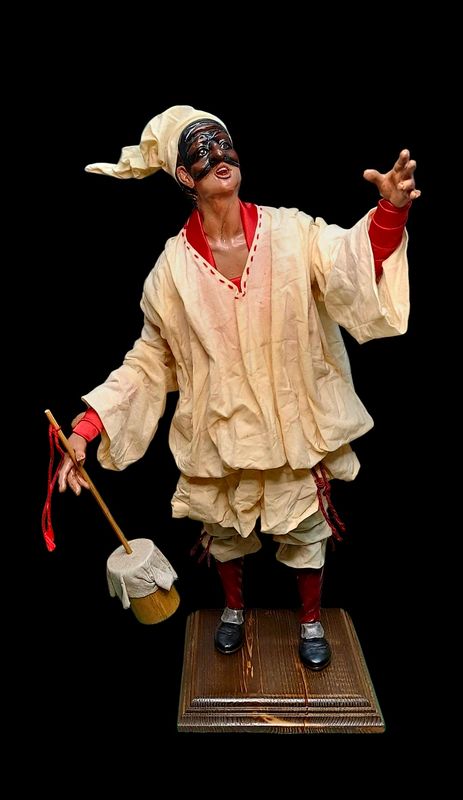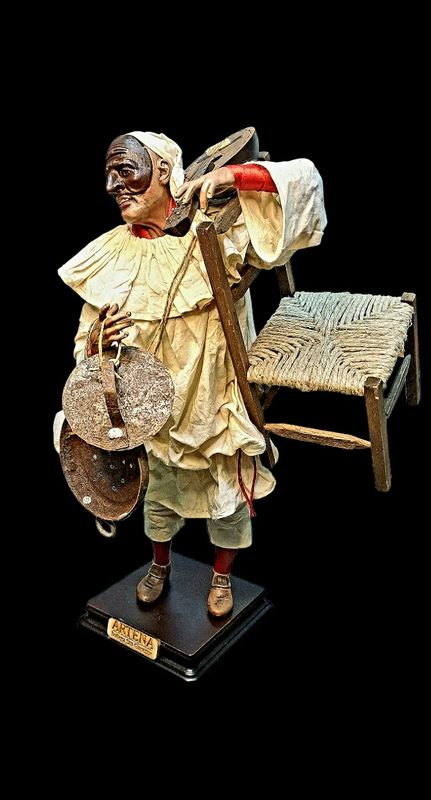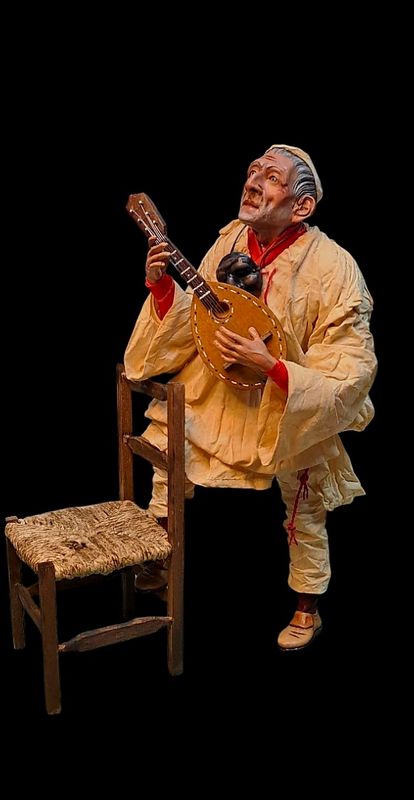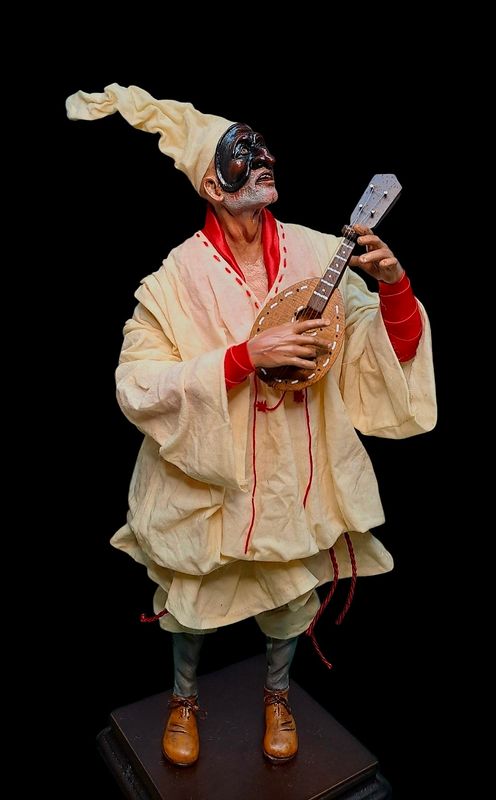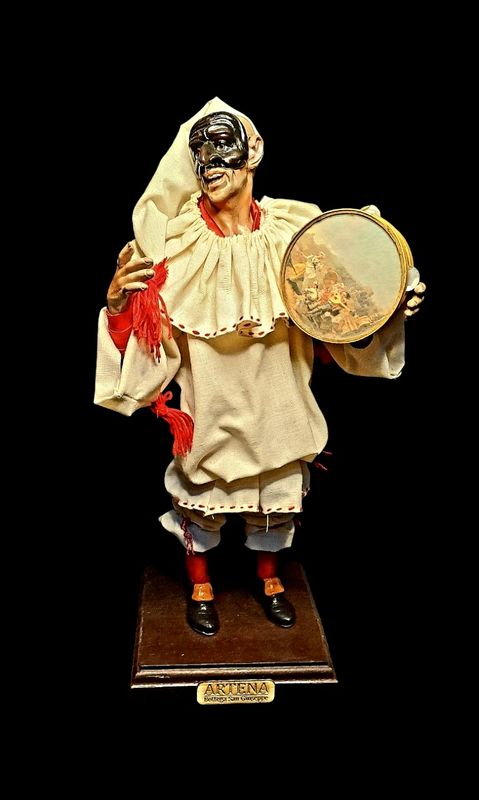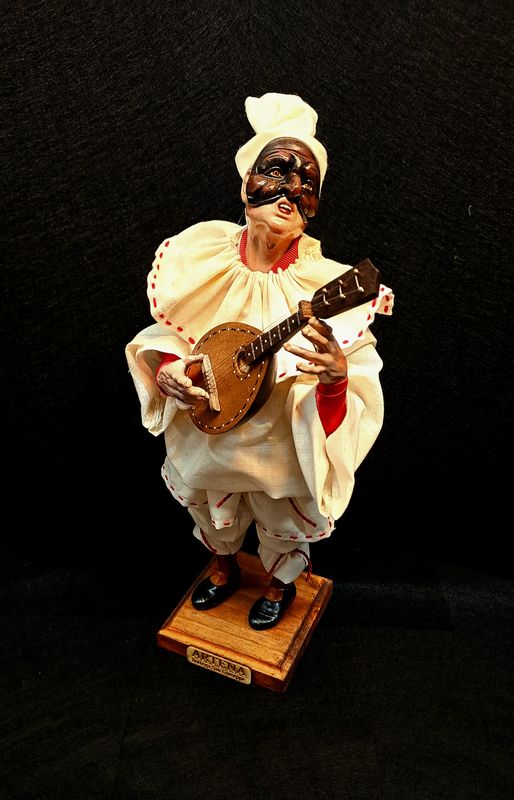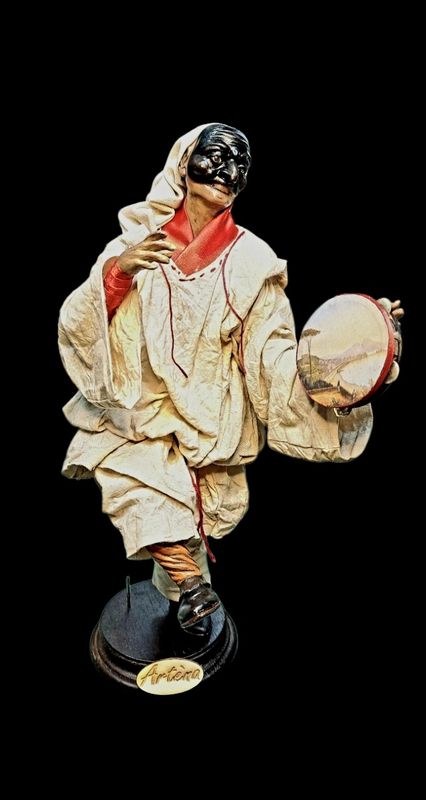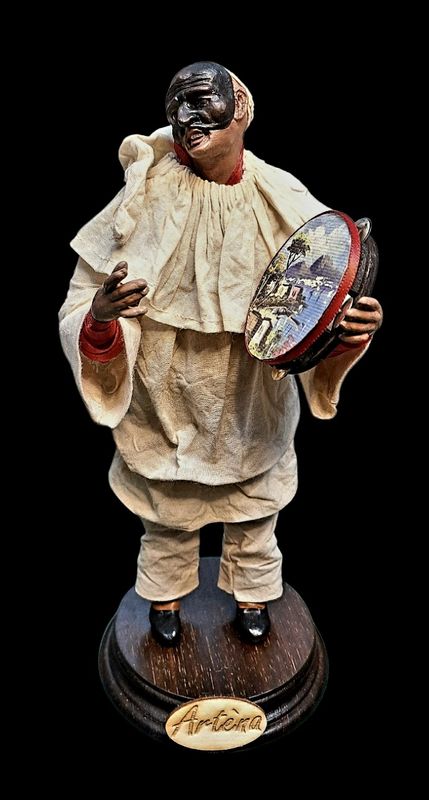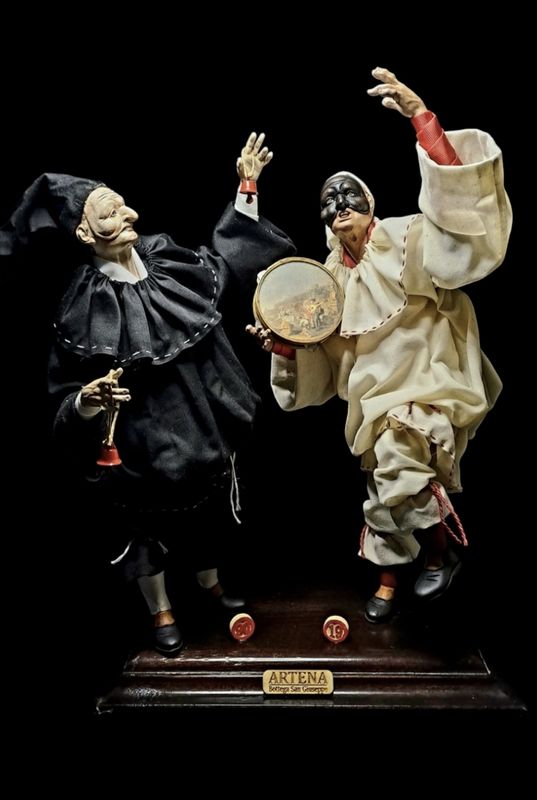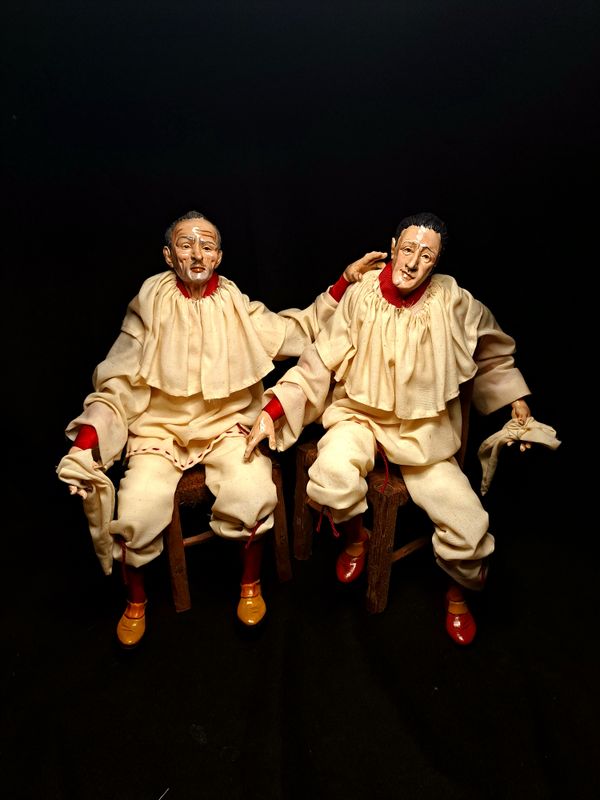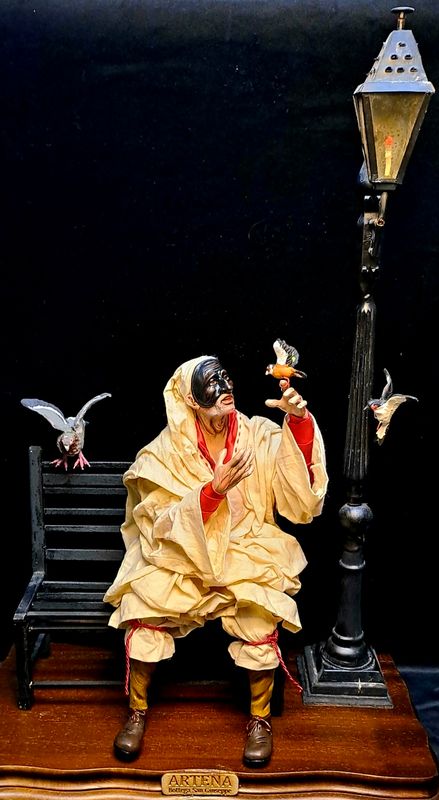Pulcinella
The story of Pulcinella stems from the famous Neapolitan mask that embodies the humor and vivacity of Neapolitan culture. Originating in the 14th century, its origins are linked to the term "little chick," originally used to describe a careless and listless person. However, its roots lie in antiquity, where the mask symbolized natural forces and represented the animal world and the dead. Since ancient times, the mask has represented various folkloristic attitudes; for example, during the Early Christian period, it was a symbol of natural forces, as well as the animal world and the dead. During the late Middle Ages, Pulcinella took on a new dimension, becoming a tool for exorcising hierarchies and acquiring a poetic function, especially in courts. The origins of the mask in Naples date back to that period, when Silvio Fiorillo, a 16th-century playwright, introduced it into his performances. The mask of that time, a "half mask" or "wolf" with a curved nose, a wrinkled face, and small eyes, differs significantly from today's image of Pulcinella. Transformations over the centuries have led to the iconic version of Pulcinella, characterized by a shrill voice and resembling a black chanterelle. These distinctive features contributed to the evolution of the term "polleciniello" in the Neapolitan dialect, highlighting the uniqueness and lively history of this fascinating Neapolitan mask.



